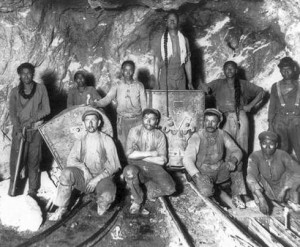War has an understandably profound effect on our global economy and the fiscal and monetary effects of war are often far reaching, a fact that can be demonstrated when you look at the history of gold prices in conjunction with major events like a world war.
 Financial barometer
Financial barometer
Financial markets are always going to be susceptible to bad news and concerns but it is interesting to note that war tends to lead to a specific type of inflation which is caused by expectation rather than actual changes.
This type of inflationary pressure occurs when prices begin to rise not because of physical changes in the level of supply and demand but are more driven by the fear of the changes that might happen as a result of a traumatic event like a world war.
The start of World War 1 also marked the end of the gold standard, which is a major part of economic history in general and a fundamental part of how we view gold and its value to us and the economy in general.
The Gold Standard
Some financial analysts are of the opinion that the world gold standard of the late 19th century was as close to a perfect monetary system as you are likely to ever see.
Running from about 1870 through to 1914, this period of time in our economic history was considered to be the best period for the gold standard since its introduction in 1819. The gold standard was the term used to describe a commitment by participating countries to set the prices of their domestic currencies in comparison to a specific amount of gold.
It was Sir Isaac Newton, who was the master of the mint in 1717, who overvalued the guinea in terms of silver and this led to a de facto gold standard being adopted in England. It wasn’t until 1819 that England then chose to formally adopt the gold standard, and the United States, which was already operating a formal bimetallic standard (gold and silver) by then, switched to a gold de facto agreement until Congress passed the Gold Standard Act in 1834.
When the gold standard was formally introduced into legislation, the price of gold was fixed at $20.67 per ounce, which is the price it remained at until 1933.
Other major developed countries subsequently adopted the gold standard in the 1870’s and this period in economic history between 1880 to the start of World War 1, is generally known as the classical gold standard.
This period of time witnessed unprecedented economic growth and an explosion in free trade in goods, labor and capital and to a large extent, most of the participating countries adhered to the gold standard during this time.
How the gold standard was used
The gold standard was utilised as a domestic standard to regulate the quantity and growth rate of each country’s money supply.
It worked on the basis that any new production of gold would add only a small amount to a country’s accumulated stock and due to the fact that the authorities agreed to guarantee the option to convert gold into non-gold money free of charge, this allowed the gold standard to help ensure that money supply and prices would not suffer from much volatility as a result of this agreement.
The idea worked in principle, but sudden surges in the level of world gold stocks caused by events such as major gold discoveries in Australia and California in the 1850’s, had a destabilising effect on price levels in the short term.
The gold standard also played a pivotal role in serving as an international standard to determine the value of a country’s currency in relation to the currencies of other countries.
This worked because the participating countries who adhered to the gold standard agreed to maintain a fixed price for gold, allowing rates of exchange to be fixed accordingly. As a result of this agreement to fix exchange rates, the gold standard had the effect of causing price levels around the world to move together.

In order for the gold standard to work in the way it was intended, it relied on the participating countries honoring the equivalent of a gentleman’s agreement and to abide by the rules of the game.This mean that if a country was running a balance-of-payments deficit, it was obliged to permit an outflow of gold until parity to the agreed par exchange rate had been restored.
The demise of the gold standard
The gold standard is no longer used by any government, although some financial experts consider that the appeal of the system is still very strong, despite some of the limitations and lack of flexibility that it offers in certain conditions.
Britain abandoned the gold standard completely in 1931 and the U.S followed suit in 1971. The replacement for the gold standard is fiat money, which is the term used to describe currency used as a result of a government order.
The price of gold today is determined solely by the demand for the metal but despite the fact that it is no longer operating as an international standard, it still has an important role to play in world economics.
Gold is utilised as a major financial asset for not just countries but central banks too. It also used by banks as a method of hedging against loans made to their government.
The effect of war on gold prices
It is interesting to note that the UK economy actually grew by about 7% between 1914 to 1918 despite World War 1 and the fact that so many men were absent and serving their country. The German economy actually shrank by 27% in the same period and the war saw an understandable decline in civilian consumption.
By the time we reached 1916, Britain was taking responsibility for funding not just their own war expenditure, but they were also meeting all of Italy’s costs plus two thirds of the war costs incurred by France and Russia.
As a result of this, gold reserves as well as overseas investments and the flow of private credit all just ran out, forcing Britain to go cap in hand to America and borrow $4 billion from the U.S Treasury.
This is a guest blog from Alternative Investment Headquarters. You can read more here